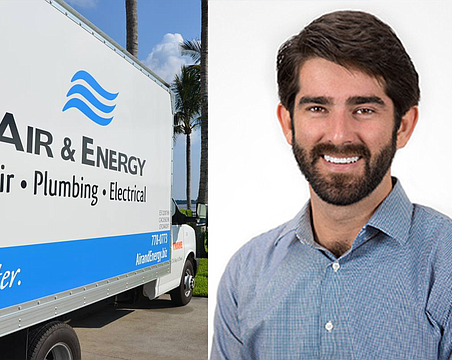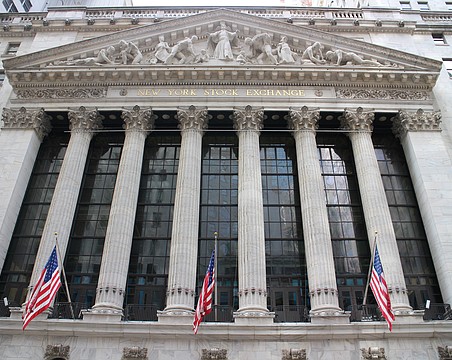Executive Summary
Company. Associated Space Design Industry. Architecture Key. Risk is good, but don't be reckless.
Before this year, if someone asked Ken Cowart his crown jewel project, the Tampa leader of Associated Space Design would quickly point to the PricewaterhouseCoopers center at Tampa's MetWest.
The vibrant, colorfully lighted 10-story building on the edge of the Westshore District is impossible to miss by travelers on Boy Scout Road coming out of International Plaza and Bay Street, or the airport. It's certainly not what many would expect when they think of accounting firms that predate the Civil War.
But soon Cowart hopes to have a new project to brag about, and it's one he expects will be a Tampa Bay region icon for decades to come.
Cowart assembled a team that won first crack at completely overhauling The Pier in St. Petersburg. After months of planning and tens of thousands of dollars' worth of long days and sleepless nights, Pier Park will rise from where now stands the popular but aging inverted pyramid off Second Avenue Northeast. The onetime home of the Pier Aquarium and a Columbia restaurant will give way to a combination of parks, a 7,600-square-foot restaurant, an outdoor event space for up to 4,000 people and 17,000 square feet of floating dock for boaters.
A pier has existed in this part of the Tampa Bay waters for more than 125 years.
“If you look at the history of the pier, it seems something new is built there every 30 to 40 years anyway,” says Cowart, an associate at the architecture and design firm. “It's an incredible waterfront, which through the vision of pioneers and so many people after them, is still something special for St. Petersburg today.”
Assessing risk
Responding to the city's search to create a new pier, like ASD did, is expensive -- and not only in the amount of cash needed to develop a proposal. It also comes in time and resources devoted to an unknown project that diverts employees away from more certain work.
In addition, the odds of finishing at the top of a pile in a government ranking are high enough to make Las Vegas casino owners salivate. And this particular project was even more trouble-prone: St. Pete city officials already had been through the selection process once, and chose a winner for the $50 million project, only to have it overturned in a city-wide referendum.
Jason Jensen, a principal at St. Pete-based Wannemacher Jensen Architects, was a part of that previous winning design team, headed by Michael Maltzan Architecture out of Los Angeles. “The Lens,” as the project was known, would have featured a running and cycling trail over water, designed to create a visual landmark.
“If we were billing the time we spent on the pier, it would be well over $1 million,” Jensen says.
Despite the expense, there were still strong returns for Jensen and his team, especially as he focused on branding his architectural firm. “This is something so iconic, so fantastic, it could easily symbolize your firm,” Jensen says. “You always get judged on what you've done before. If you have a project like this so identifiable within the community, it could really affect the rest of the career of a firm.”
Jensen lost the work his firm won after a referendum led by the Concerned Citizens of St. Petersburg voted down The Lens in August 2013. However, his firm decided to spend more money and time again, when it submitted a new proposal called “Destination St. Pete Pier.” That proposal finished second behind ASD's bid.
Jensen chooses to focus on the positive. “We got our name out there,” he says, “and we showed we could compete with other international firms.”
Making changes
Cowart couldn't quantify how much it cost to create and promote his Pier Park concept, other than saying his team logged about 200 hours of work in the process.
Competing against the likes of Wannemacher, as well as global firms like Chicago-based Ross Barney Architects and Alfonso Architects, with offices in Tampa and Italy, also meant ASD needed assistance. So Cowart partnered with Rogers Partners of New York City, as well as Ken Smith Landscape Architect to help absorb some of the risk.
“Rogers Partners actually found us,” Cowart says. “They had already created a series of waterfront public spaces in New York, and knew we were assembling a team for this project.”
But the pier's false start with The Lens still haunted the process. “It was difficult at first to put our team together, simply because of some not wanting to be involved because of what happened in the past,” Cowart says.
The city, however, learned from its mistakes with The Lens, and completely changed the process — and overall direction -- of the pier project. This time, the public was included from the beginning, with surveys and interactive meetings. Through that discussion, city officials found people didn't just want something that looked pretty, but it had to be functional, too, much like the inverted pyramid was before it closed in 2013.
Attracting a good mix of designers required assurances that their money and resources wouldn't be wasted again because of negative public outcry. “We learned from those discussions with the public that they wanted a pier that was function over form,” St. Petersburg city spokeswoman Kristin Brett says. “We created that buy-in process from the start, giving people a voice from the first day.”
There is still risk for Cowart and his team, even as they move forward with Pier Park. Michael Maltzan was waiting for its initial $1.5 million payment from the city just before The Lens project collapsed.
Cowart knows there could be public sentiment against Pier Park as well, but he trusts his team has bought into a much more stable process.
“Sure, a referendum could still happen, but I think the outcome would be a lot different this time,” Cowart says. “That's what good due diligence does.”

THE PIER TIMELINE
1889 -- Orange Belt Railway constructs a pier, accessible by rail, in Tampa Bay. Pier is built three years before St. Petersburg is incorporated.
1906 — Buoyed by the success of the first pier, the new St. Petersburg government constructs what would become the Electric Pier, extending 3,000 feet into the bay water.
1914 -- The Municipal Pier replaces the Electric Pier.
October 1921 — The Tampa Bay Hurricane of 1921 heavily damages the Municipal Pier, prompting St. Pete officials to raise a $1 million bond for repairs.
November 1926 -- The new project, the Million Dollar Pier, is dedicated, which includes a casino and observation deck.
1967 — Million Dollar Pier is demolished.
1973 -- Local architect William Harvard Sr.'s inverted pyramid opens, becoming the new iconic centerpiece to what has become The Pier.
2004 — Structural concerns force city officials to consider massive renovation or even a complete rebuilding of The Pier.
August 2010 -- St. Petersburg city council votes to authorize demolition of the current pier.
April 2011 -- A design competition is launched for a new pier. City sets aside $50 million for demolition and construction.
January 2012 -- A city-appointed panel selects a $37 million running/cycling trail over water proposal dubbed “The Lens.”
June 2013 -- A group called Concerned Citizens of St. Petersburg convinces the St. Petersburg city council to put The Lens up for a referendum.
August 2013 -- With 63% of the vote, St. Petersburg residents reject The Lens.
January 2014 -- Newly elected St. Pete Mayor Rick Kriseman calls for a new process to select a pier design, calling for larger public input before a decision.
April 2015 -- After months of presentations, surveys and group discussions, a selection committee picks Pier Park from a partnership of Associated Space Design in Tampa, Rogers Partners in New York and Ken Smith Landscape Architect.
Source: City of St Petersburg







